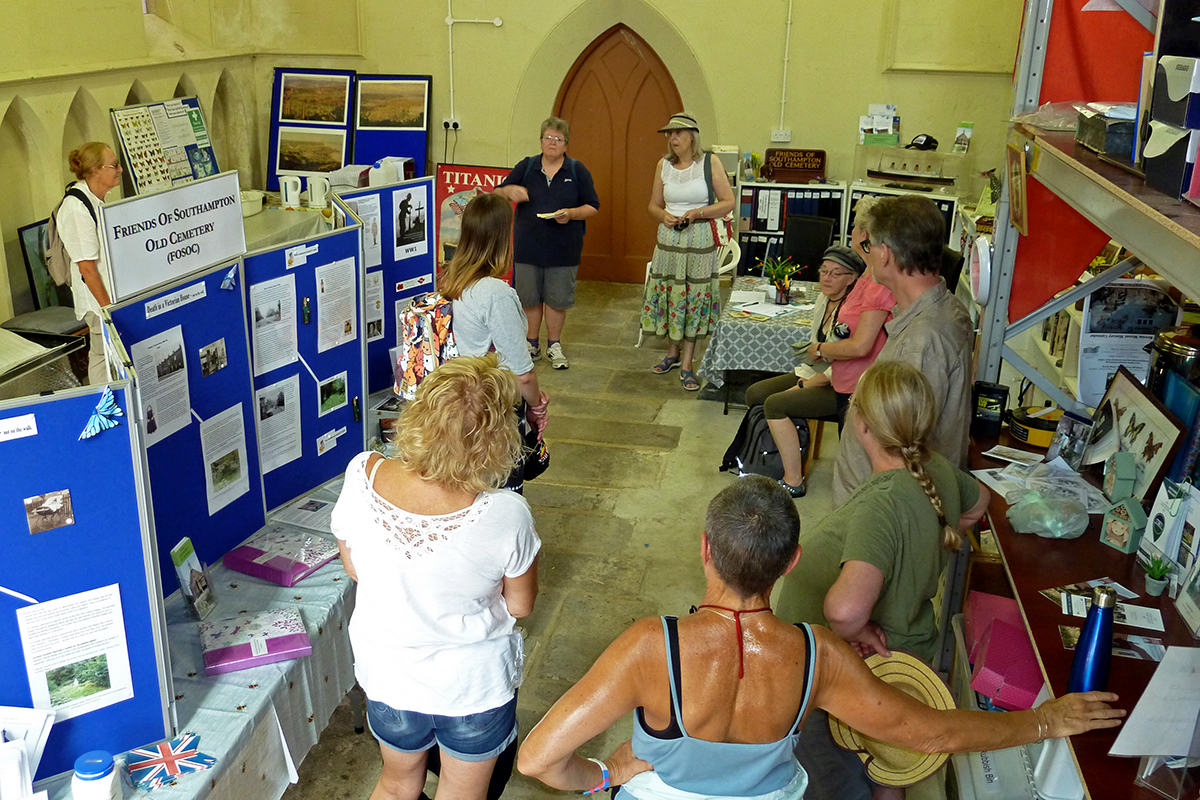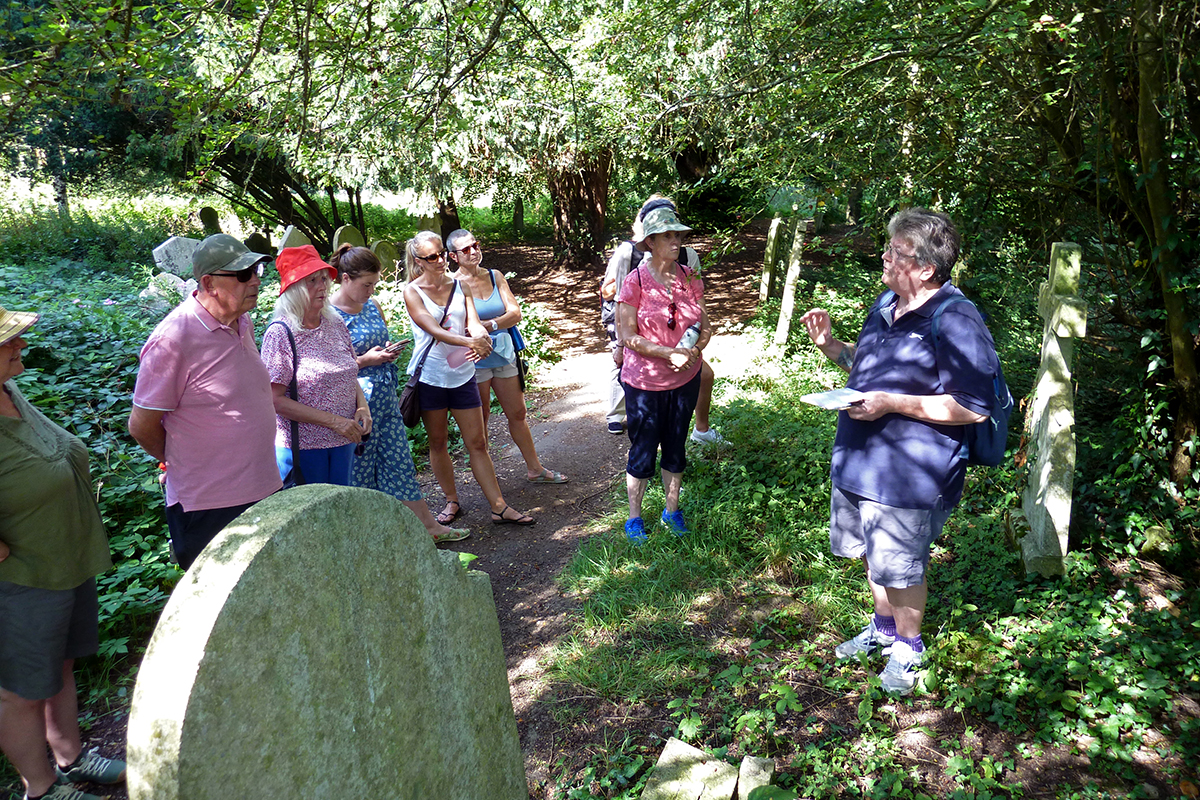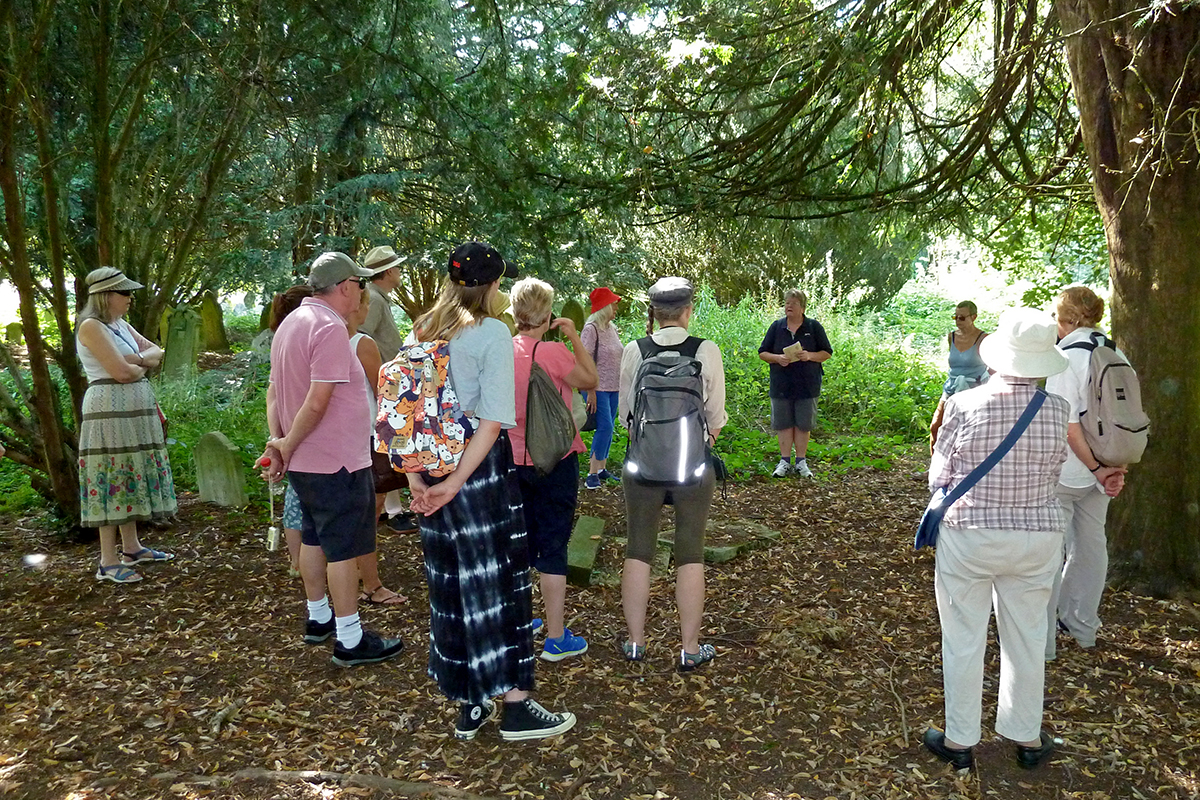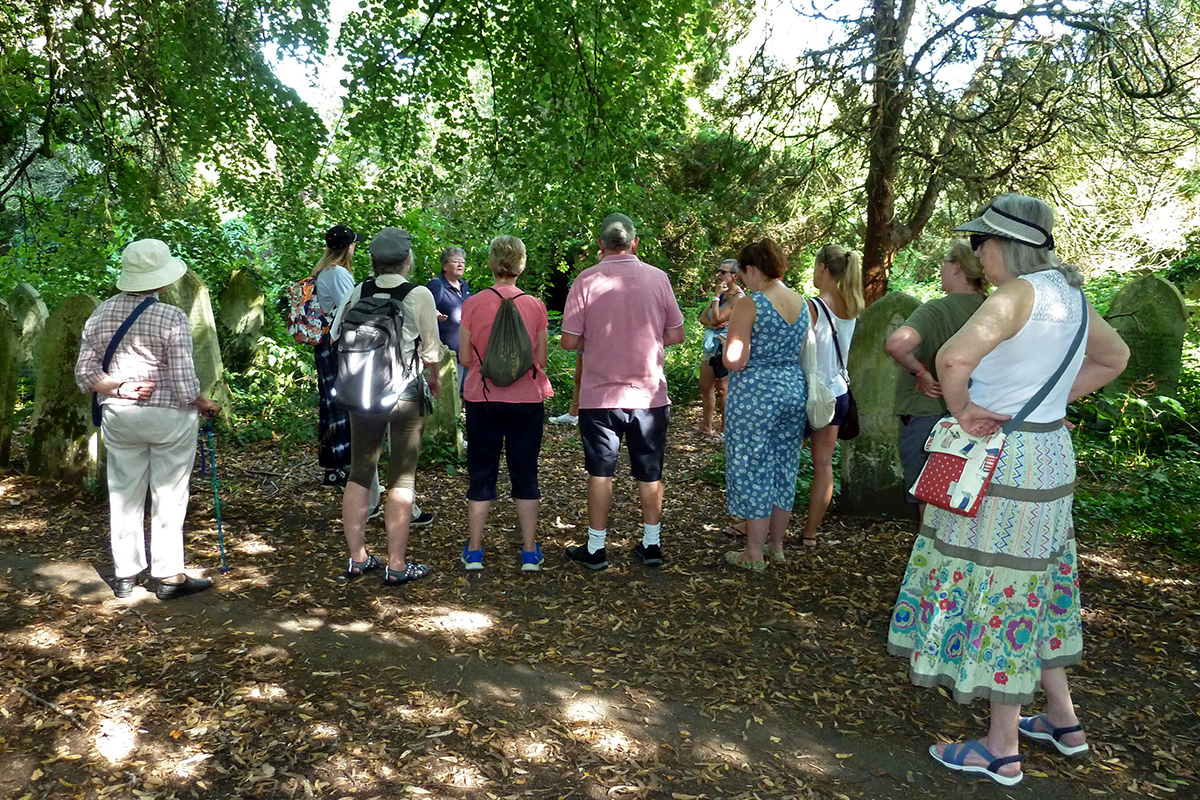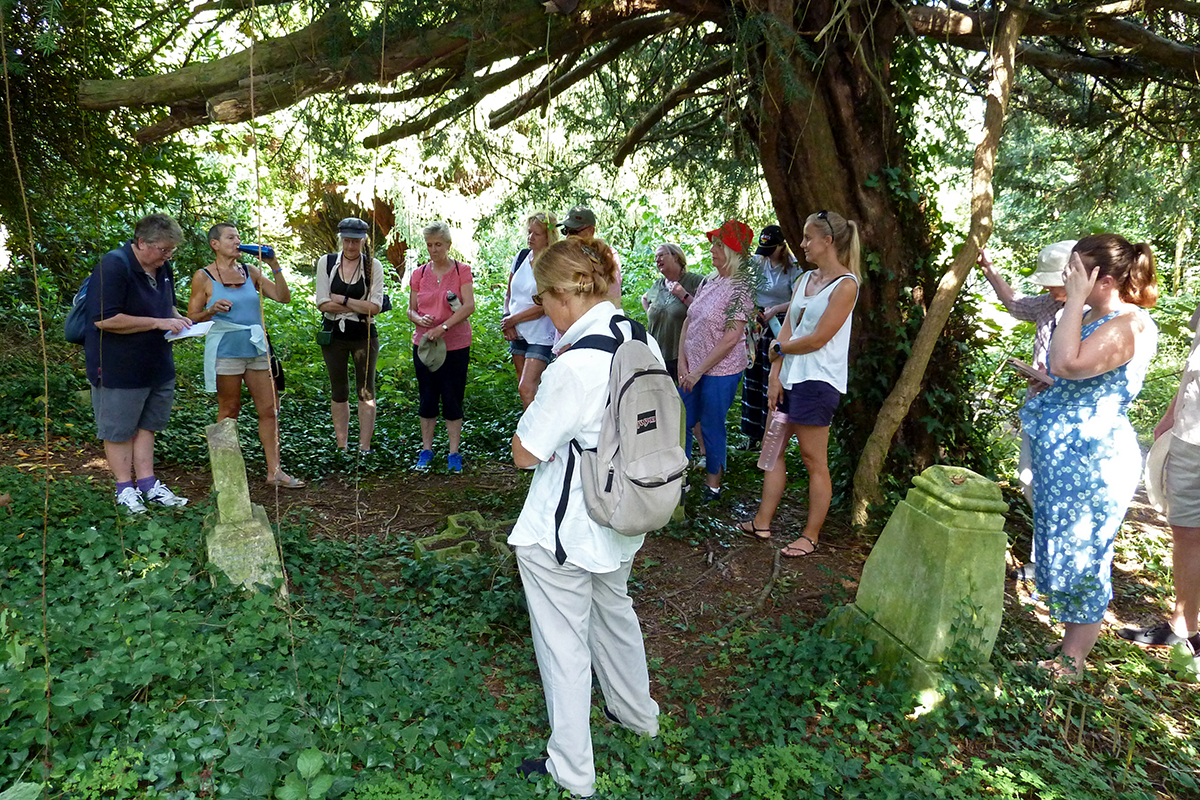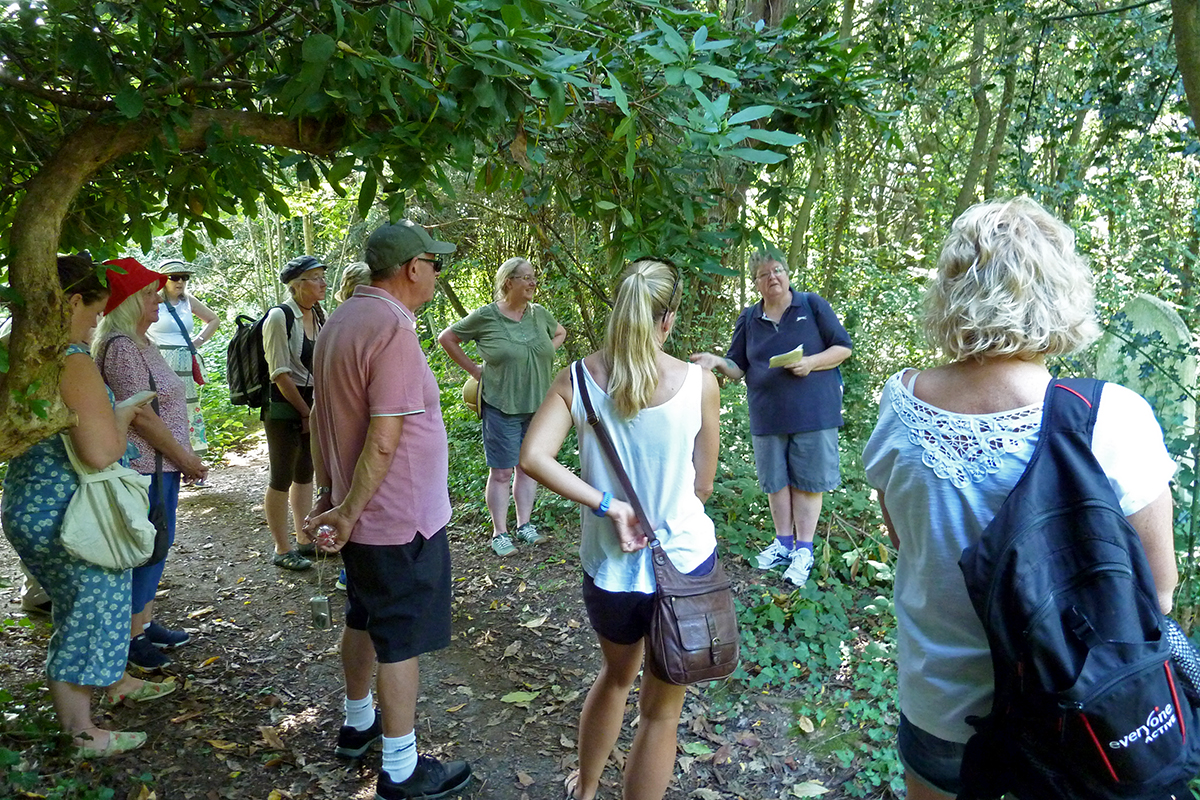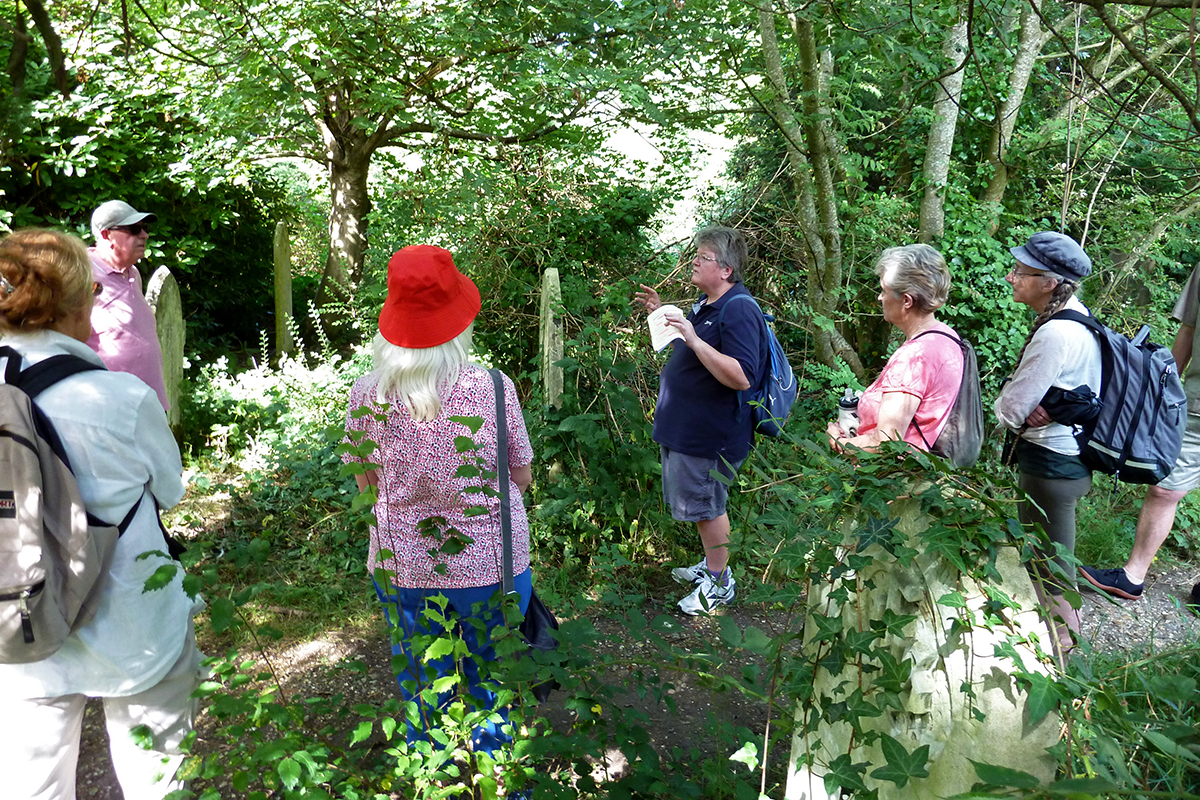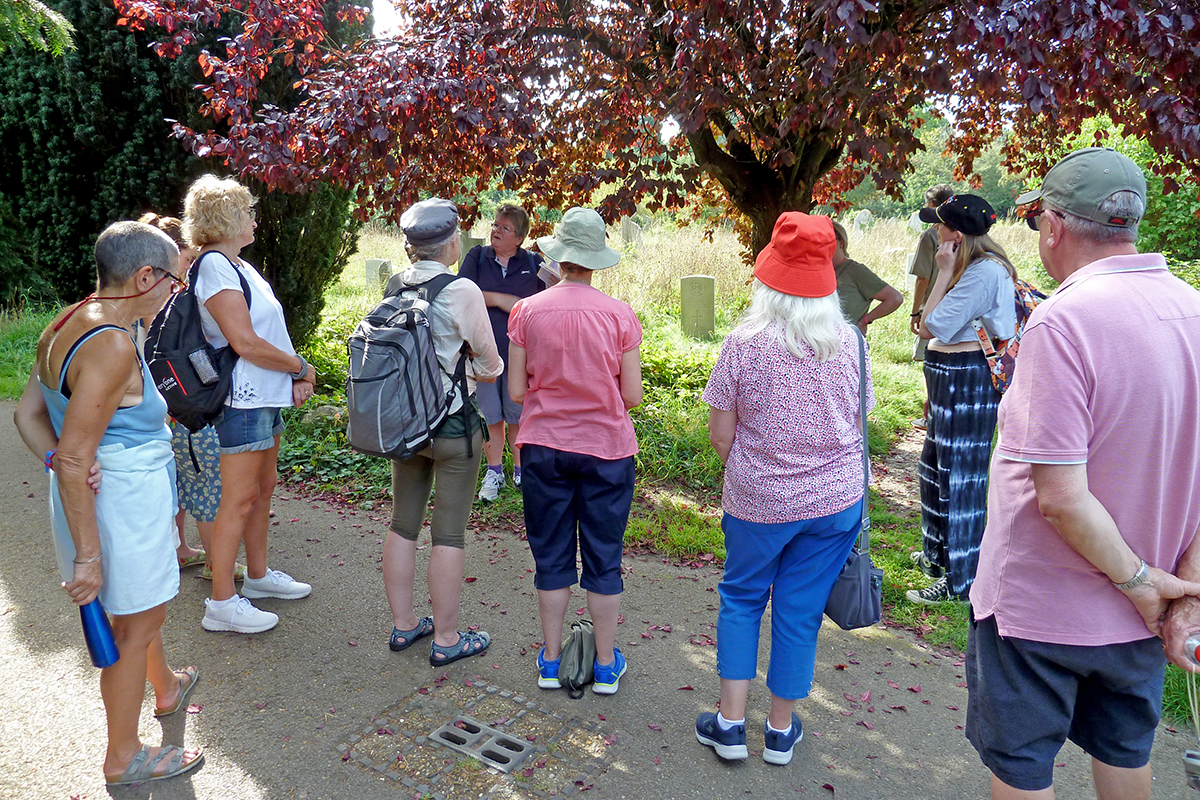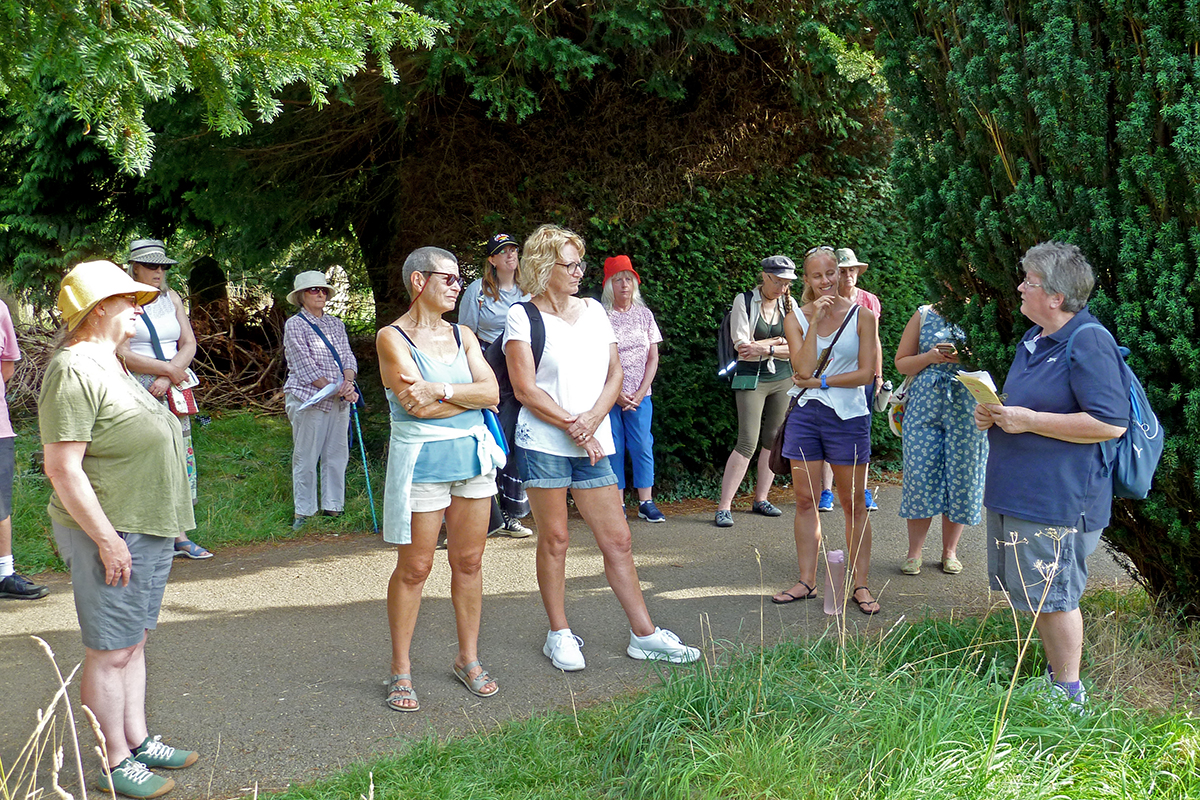‘Death in a Victorian House’
Today (Saturday 9th September) was my second walk of the year and it was a HOT, sunny afternoon and luckily most of the route was under cover of the trees. The walk started with thirteen people, and we left the non-Conformist chapel, going up one of the more “rural” paths in the cemetery then cutting across the top of the cemetery, coming back along the yew tree pathway, and ending just outside the Jewish cemetery. The group heard the stories of sixteen unfortunate people who died by various means in their own home. Here are just three.
Norman Oscar Thomas (January 1899) was the son of Oscar a bandsman in the Hampshire Rifles. Norman lived with his family in Fanshawe Street in Newtown, The family had a maid, called Kate who looked after Norman during the day. Norman had been ill recently and was taking medicine prescribed by his doctor, and the bottle of medicine was kept in the kitchen dresser drawer. That morning Kate took the bottle of medicine from the drawer and gave Norman 2 drops with his breakfast. By lunchtime Norman was being violently sick and was having fits. The family took Norman to hospital where the doctor thought he was had been poisoned and gave an emetic to help alleviate the symptoms. But Norman got worse, and he died in a convulsive attack. The Coroner wanted to know what the medicine was so the father went to the drawer to get it and found there were two bottles in there. Both bottles were the same colour and shape, but one was Normans medicine and the other was a potion for the dog. Poor Norman had been poisoned. The Coroner made a remark that medicines for humans should be kept away from those for animals. Norman was buried in the family grave.
Mary O’Donnell (December 1885) was seven years old and lived with her dad James and mum Catherine in Cement Terrace. Catherine said she put Mary to bed at 9pm and left a small benzolyne lamp burning on the mantelpiece as she was frightened of the dark. Catherine said about an hour later her and James heard screaming from Marys room, so they rushed in there to see what was wrong. As they opened, the door they saw Mary stood by her bed engulfed in flames. James said he picked up the rug and wrapped Mary in it to put out the flames. Mary’s crinoline nightie had melted to her skin and she was very badly burned. Mary was taken to hospital where she was treated but it was not hopeful. Mary did manage to tell a nurse what happened. Mary said she woke up and had wet her nightdress. She said she didn’t want to get into trouble so she got out of bed and put the benzolyne lamp on the floor and then stood in front of it trying to dry her nightie. Mary said a spark caught the nightie and she was engulfed in flames and couldn’t get it off. The nightdress was made of crinoline. Mry died later the next day. At the inquest Coroner Coxwell expressed his misgivings about the “wonder material crinoline” as it did seem to be linked with several deaths where the clothes caught fire. Mary was buried in the family grave.
Alice Campbell (January 1891) was ten years old and lived with her two younger brothers, her dad James and mum Alice in Sawmill Cut in Threefield Lane. The family were very poor and the school and neighbours had complained to the NSPCC that the children were filthy, smelled and neglected. The NSPCC were trying to inspect the family but could never find anyone in. Alice was regularly left to care for her siblings while the parents were at work. Alice was totally blind and was left that morning in front of an open fire making toast for breakfast. The neighbour heard cream coming from the Campbells house and rushed in to find Alice engulfed in flames. He put the fire out using a rug and then took her by cab hospital where she was treated. Alice was very poorly and had 90% burns and was not expected to live. At the inquest a nurse gave evidence and told the Coroner that Alice had told her it was not an accident but that she had been pushed into the fire by her brother as he wanted his toast first. The brother when questioned by the Coroner denied this saying Alice had tripped and fallen into the fire. The mother said it was Alice’s own fault as she was always standing to close to the fire, and she repeatedly told her she would burn herself and look what happened. Alice was buried in a pauper grave with 21 others.
The group seemed to have enjoyed my walk it and gave me a round of applause and then we went back to the Non – Conformist chapel so people could see and read three more stories on the display of whose graves that were too far or inaccessible to get to on this walk.
Written by Lizzie O’Sullivan (FoSOC Guide)
Photos taken by Bruce Larner
